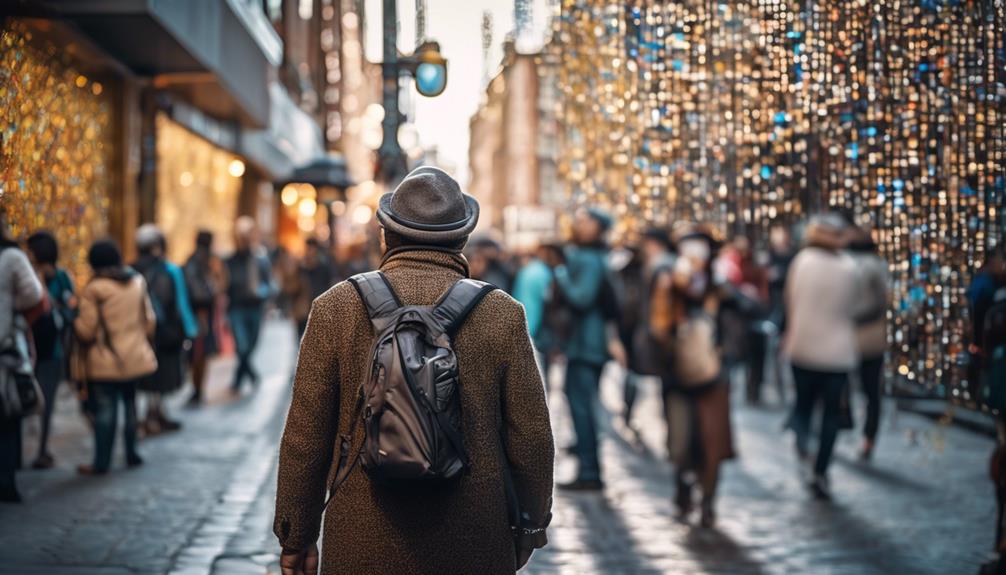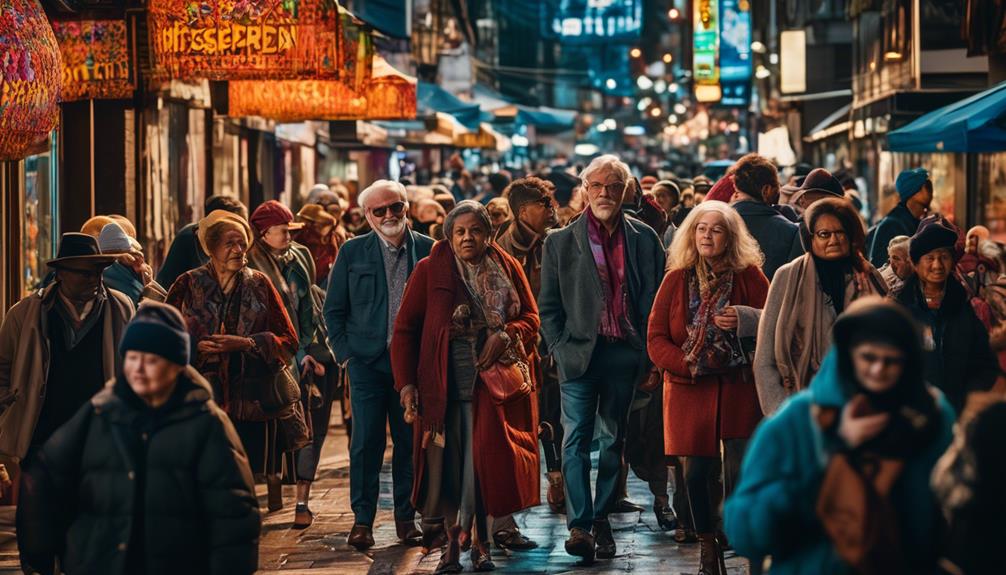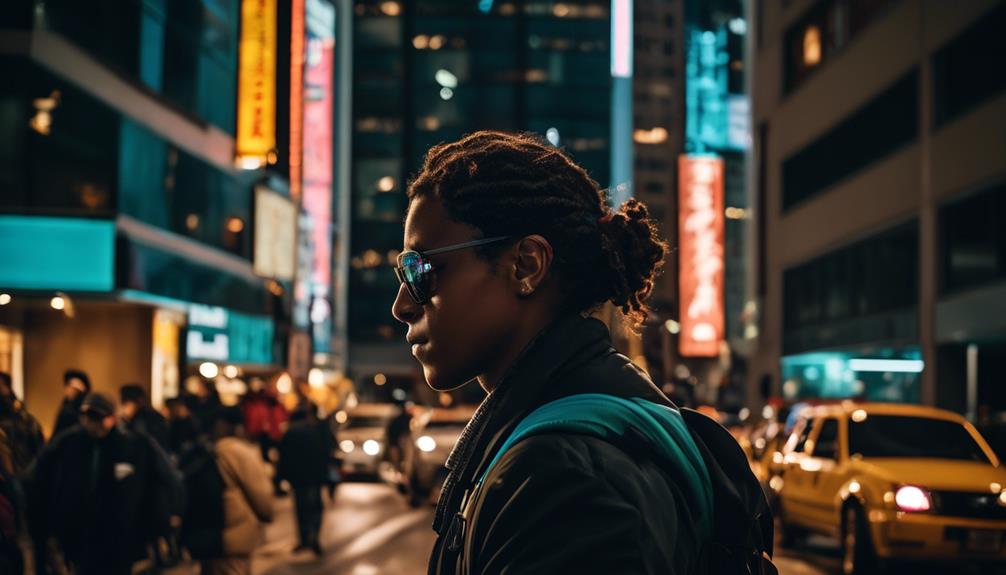Please note this post may contain affiliate links picked by me (Jay) that I have deemed may be of interest or relevant to you the reader of this.
These links do not affect the cost of the thing if you decide to purchase but i may get a little money if you choose to purchase.
For more information on my affiliate link policy click here.
Walking through the bustling streets of a vibrant city, I found myself captivated by the scene unfolding before me. People going about their daily lives, unaware of my presence with a camera in hand. It was in that moment that I grappled with the ethical considerations of candid street photography.
How far could I push the boundaries of capturing authentic moments without infringing upon the privacy and consent of those I was photographing? This question, and many others, lie at the heart of navigating the complex world of ethics in candid street photography.
In this discussion, we will explore the importance of ethical considerations, the nuances of consent and privacy, the various approaches to capturing authentic moments, the delicate balance between artistic intentions and respect, and the potential impact of street photography on the communities it portrays.
Join me as we unravel the intricate threads of this fascinating topic, seeking a deeper understanding of the ethical challenges faced by street photographers.
Key Takeaways
- Ethical considerations are crucial in candid street photography to respect privacy and consent.
- Understanding consent and privacy is essential in capturing authentic moments while protecting the subjects' rights.
- Balancing artistic intentions with respect for subjects is a challenge that street photographers must navigate.
- Responsible street photography has the potential to impact communities positively by challenging stereotypes and initiating conversations.
Importance of Ethical Considerations
When it comes to street photography, the importance of ethical considerations can't be overstated. As a photographer capturing candid moments in public spaces, I'm constantly faced with ethical dilemmas and the need to define my own ethical boundaries.
Street photography, at its core, is about capturing the raw and unfiltered moments of everyday life. It's about telling stories and capturing the essence of humanity. However, in the pursuit of capturing these moments, it's crucial to navigate the fine line between documenting reality and invading someone's privacy.
One of the most common ethical dilemmas in street photography is the issue of consent. As a photographer, I must always be mindful of the subjects I choose to capture. I ask myself, is it appropriate to photograph someone without their knowledge or consent? Will this image portray them in a negative light? These considerations are essential in ensuring that I respect the dignity and privacy of the individuals I photograph.
Another ethical consideration is the impact of my presence as a photographer on the environment I'm capturing. Am I disrupting the natural flow of the scene? Am I altering the behavior of the subjects by my mere presence? These questions prompt me to reflect on my role as an observer and the responsibility I hold in presenting an accurate representation of the moment.
Ethical boundaries in street photography aren't set in stone. They require constant self-reflection and an understanding of the impact our work can have on others. By recognizing and respecting these ethical considerations, we can strive to create meaningful and thought-provoking images that both captivate and respect the subjects we photograph.
Understanding Consent and Privacy
As a street photographer navigating the complexities of ethical considerations, one of the fundamental aspects to understand is the delicate balance between respecting consent and privacy. It's crucial to ensure that the subjects of our photographs are aware of and have given their informed consent for their images to be captured and potentially shared. Failing to do so can have significant legal implications and may infringe upon individuals' right to privacy.
When it comes to consent and privacy in street photography, here are a few key points to consider:
- Informed consent: Obtaining informed consent means that the subject understands how their image will be used and has given their permission knowingly and willingly. This helps to build trust between the photographer and the subject, ensuring respect for their autonomy.
- Respecting personal boundaries: It's important to recognize and respect personal boundaries when photographing people in public spaces. This includes being mindful of capturing individuals in potentially vulnerable situations and refraining from invading their personal space without permission.
- Blurring faces or using creative techniques: Blurring or obscuring the faces of subjects can be an effective way to protect their privacy while still conveying the essence of the scene. Additionally, employing creative techniques such as shooting from behind or focusing on non-identifiable details can maintain anonymity.
- Sensitive locations and events: Certain locations and events may require extra sensitivity when it comes to consent and privacy. It's crucial to consider the context and potential impact of our photographs before capturing and sharing them.
Approaches to Capturing Authentic Moments
To capture truly authentic moments in street photography, one must immerse oneself in the vibrant tapestry of everyday life, observing and anticipating the fleeting interactions and emotions that reveal the essence of the human experience. It is through this deep connection with the world around us that we can capture images that not only reflect cultural representation but also provide social commentary.
To achieve this, street photographers employ various approaches that allow them to capture the raw and unfiltered moments that make up the fabric of society. These approaches can be likened to the different strokes of a painter's brush, each creating a unique effect and contributing to the overall narrative of the image.
| Approach | Description | Example |
|---|---|---|
| Candid | Capturing moments as they naturally unfold, without any interference or direction from the photographer. | A candid shot of a street performer engrossed in his music, capturing his pure passion. |
| Documentary | Focusing on capturing real-life events, activities, and people, often with an emphasis on social issues. | Documenting a protest march, highlighting the collective voices of the marginalized. |
| Storytelling | Crafting a visual narrative by capturing a series of images that collectively tell a compelling story. | A sequence of photographs capturing the daily struggles and triumphs of a street food vendor. |
These approaches not only allow photographers to capture authentic moments but also provide a platform for cultural representation and social commentary. By showcasing the diversity and complexities of society, street photographers have the power to challenge stereotypes, provoke thought, and initiate conversations.
Balancing Artistic Intentions and Respect
As street photographers strive to capture the raw and unfiltered moments that form the essence of society, they must navigate the delicate balance between expressing their artistic intentions and showing respect for the individuals they photograph.
Ethical dilemmas arise when street photographers are faced with the question of whether capturing an authentic moment justifies potentially invading someone's privacy or causing them discomfort. It's important to consider the potential impact on the subject's emotional well-being and reputation.
Boundaries and limitations play a crucial role in maintaining respect while pursuing artistic visions. Street photographers must be aware of cultural norms, personal boundaries, and legal restrictions to ensure that they don't cross any lines or exploit vulnerable individuals.
The power dynamic between the photographer and the subject is an important aspect to consider. Street photographers should strive to create a collaborative and mutually respectful environment, where the subject is aware of being photographed and has a say in how their image is used.
Empathy and compassion are essential in street photography. By putting themselves in the shoes of their subjects, photographers can better understand and respect their experiences, stories, and emotions.
Finding the balance between artistic expression and respect requires constant self-reflection and critical thinking. Street photographers must continually question their intentions, challenge their biases, and be willing to adapt their approach when necessary. By doing so, they can create thought-provoking and innovative work that respects the dignity and humanity of the individuals they photograph.
Impact of Street Photography on Communities
Street photography has the power to shape and influence communities by capturing and reflecting the diverse realities and narratives that exist within them. It serves as a visual documentation of the social implications and cultural appropriation that occur within our society. Street photographers have the responsibility to showcase these aspects with sensitivity and respect.
The impact of street photography on communities can be profound. It can provoke conversations, challenge stereotypes, and bring awareness to social issues. By capturing candid moments on the streets, photographers have the ability to shed light on the lived experiences of individuals who may otherwise remain unseen or unheard. This has the potential to foster empathy and understanding within communities, ultimately leading to positive social change.
However, it is crucial to navigate the ethical boundaries of street photography to avoid cultural appropriation. Cultural appropriation occurs when elements of one culture are borrowed or adopted by another, often without proper understanding or respect for its significance. Street photographers must be mindful of the cultural context in which they operate and ensure that they do not exploit or misrepresent the communities they photograph.
To evoke an emotional response in the audience, I have created a table that juxtaposes different street photographs to highlight the contrasting realities within communities. This table aims to provoke thought and encourage viewers to reflect on the social implications and cultural appropriation depicted in these images.
| Image A | Image B |
|---|---|
|  |  |
| Description of Image A | Description of Image B |
Frequently Asked Questions
Are There Any Legal Restrictions or Regulations That Street Photographers Need to Be Aware Of?
As a street photographer, I'm constantly aware of the legal restrictions and privacy concerns surrounding my work. It's essential to respect people's rights and privacy when capturing candid moments in public spaces.
While laws regarding street photography can vary from place to place, it's important to be familiar with local regulations to avoid any legal issues. Balancing artistic expression with ethical considerations is key in navigating the complex world of street photography.
How Can Street Photographers Ensure They Are Respectful and Considerate of the Subjects They Photograph?
In order to ensure that I'm respectful and considerate of the subjects I photograph, I always strive to be mindful of ethical boundaries and cultural sensitivity. This means approaching my subjects with empathy and understanding, seeking their consent whenever possible, and being aware of the potential impact my photographs may have on their lives.
What Are Some Potential Consequences or Negative Impacts of Street Photography on the Communities Where It Takes Place?
Community backlash and invasion of privacy are two potential consequences of street photography. When photographers capture candid moments without consent, it can lead to negative reactions from the community. People may feel violated or exploited when their private moments are shared without their knowledge.
This can damage the trust between photographers and the communities they document. It's important for street photographers to consider the impact of their work and find ways to navigate ethics to avoid such negative repercussions.
Are There Any Specific Guidelines or Codes of Conduct That Street Photographers Should Follow?
Are there any specific guidelines or codes of conduct that street photographers should follow?
When it comes to navigating the ethical dilemmas and privacy concerns of candid street photography, it's essential for photographers to have a set of principles to guide their actions.
While there's no one-size-fits-all answer, some common guidelines include obtaining consent whenever possible, respecting personal boundaries, and being mindful of the potential impact on the communities being photographed.
How Can Street Photographers Navigate the Challenge of Obtaining Consent in Fast-Paced and Spontaneous Street Photography Situations?
When it comes to navigating the challenge of obtaining consent in fast-paced and spontaneous street photography situations, ethical dilemmas arise. The tension between capturing authentic moments and respecting privacy can be difficult to navigate.
However, it's crucial for street photographers to prioritize consent and respect the boundaries of their subjects. Finding a balance between spontaneity and obtaining consent is key.
Conclusion
In the world of street photography, it seems that ethics and respect are as elusive as the perfect candid shot. While some may argue that capturing authentic moments is an art form, it's important to remember that the subjects of our lens aren't mere objects for our artistic pleasure.
Consent and privacy should never be compromised for the sake of a good photograph. So, let's put down our cameras and truly see the world through the eyes of others, respecting their boundaries and preserving their dignity.


